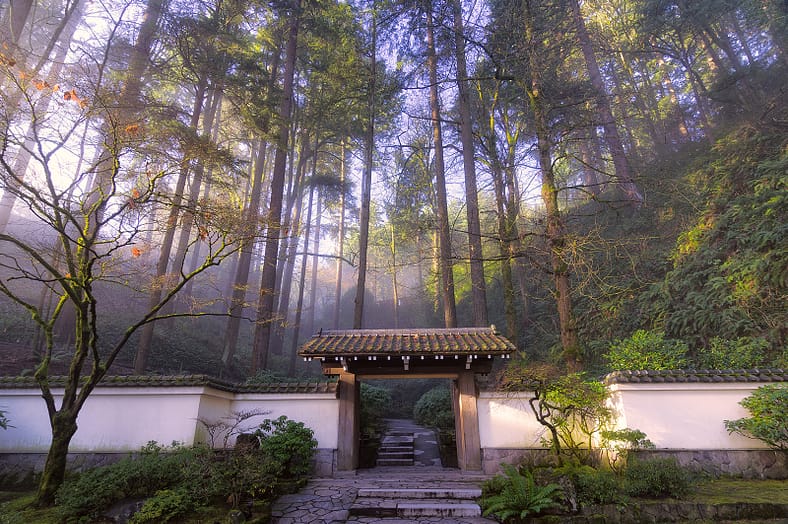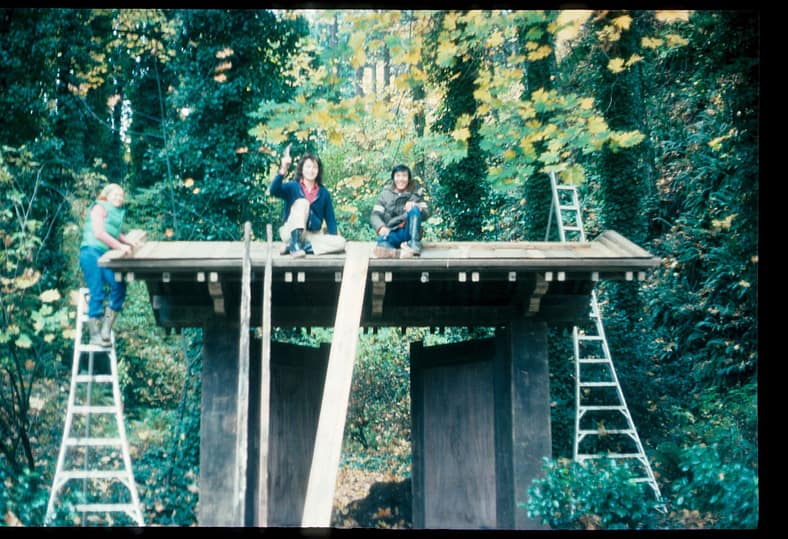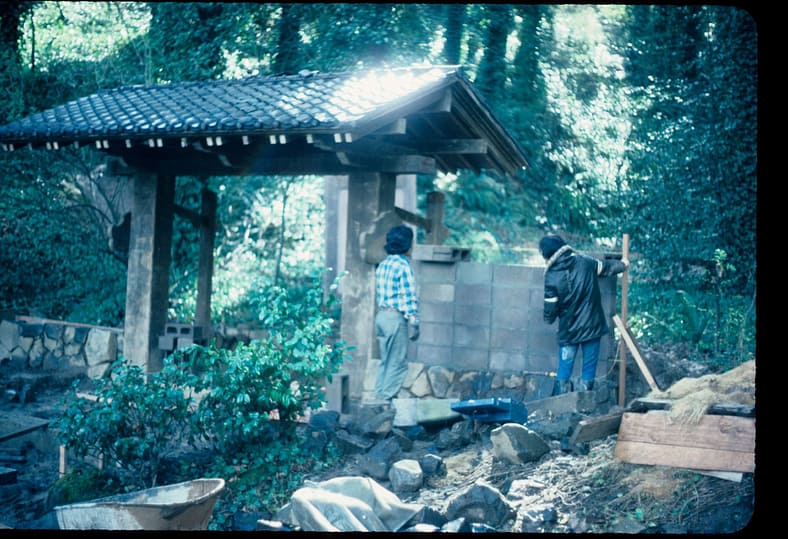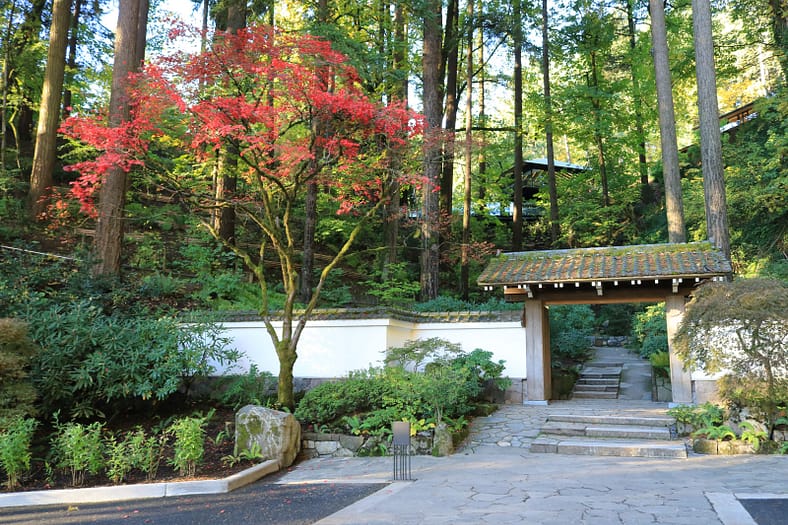
One of the most cherished elements of Portland Japanese Garden is something millions of its visitors have passed through for decades: the Antique Gate. Situated at the start of the hill of the Entry Garden, the Gate is believed to be about 200 years old and is from Sapporo, Portland’s sister city in Japan. Because of the expert care and maintenance it and its surroundings have received, it would be easy to believe that the Antique Gate has been in its location since time immemorial. However, its installation came nearly 10 years after Portland Japanese Garden opened to the public and only after original plans for it stalled.

Selected by the Garden’s original designer, Professor Takuma Tono of Tokyo Agricultural University, and donated to the Garden by the Portland Japanese Ancestral Society, the Antique Gate was initially planned to be part of the Flat Garden’s landscape near the Pavilion. However, a lack of funding prevented early Garden leaders from building the Pavilion, so the Gate was placed in storage. As the years passed and funding for the Pavilion stalled, Garden Director Michio Wakui (1974-76) decided to install the gate where it sits today in the Entry Garden rather than let it run the risk of rotting in storage.
Related: Read more about Portland Japanese Garden’s history
A 1976 newsletter sent by the Garden to its members noted, “Wakui is mounting it down below at the beginning of the footpath. It promises to provide a magnificent visual introduction and ‘fore-taste’ of the Garden itself. The City of Portland Park Bureau assisted us in providing a crane truck to move some granite slabs for use as steps in the footpath through the gate.”

In an interview with Board of Trustees President Ed McVicker (2009-11), Wakui shared that the Antique Gate had been kept in a facility run by the Portland Parks and Recreation Bureau. One day, he got a phone call from William “Robbie” Robinson, who had been head gardener for the Bureau and was an invaluable contributor to the Garden’s construction and material sourcing.
“[Robbie] asked me if I could put it together, and I wasn’t too confident but told him, ‘I’ll try,’” recalled Wakui. “He brought it over to the Garden, and it turned out that all the pieces were marked to match each other, as if they were just pulled apart, and I began putting it back together.”

Despite not being provided any further instructions than what he could discern from markings on the Gate’s accumulated pieces, Wakui worked nimbly and ably with members of the Garden Department he oversaw, including the Garden’s first female gardener, Sharon Riddell. “We first built the Gate and then built a small portion of the wall on each end since we only had enough roof tiles (kawara) for the small walls,” Wakui remembered. “I put the Gate at the bottom of hill because I thought that although the [International Rose Test Garden] is across the street, people did not notice that there is a Japanese Garden up here. To make it more noticeable, I put the Gate as an entrance to the Japanese Garden.”
Beginning in the 1990s, Garden Director Toru Tanaka (1988-91) would begin to add longer stucco and tile-topped walls next to the Gate, something Wakui was pleased about, sharing, “[The walls were] made so well, I’m very relieved.”
The Role of Gates in Japanese Culture

Aside from being physical protection to fend off enemies, gates in Japan have always had special cultural significance. Geomancy, or the art of arranging buildings within a site, was introduced to Japan from China. Incorporating tenants of feng shui, ancient rulers and feudal lords would place symbolic and decorative gates in spiritually important locations. For example, gates that embodied guardian angels would be situated in northeastern and southwestern quarters as they both were within the devil’s path. In other contexts, they provided a supernatural defense against evil spirits and ill fortune.
In geomancy, energy flow, known as ki, is paramount and is present in all Japanese garden design principles. Gates have been viewed as pivotal because ki is believed to come in and out through them. In fact, feudal lords in Japan would pay as much attention to the structure and aesthetics of gates as they did to their tenshu (castle keep).
As explained by Portland Japanese Garden’s Arlene Schnitzer Curator of Culture, Art, and Education, Aki Nakanishi.